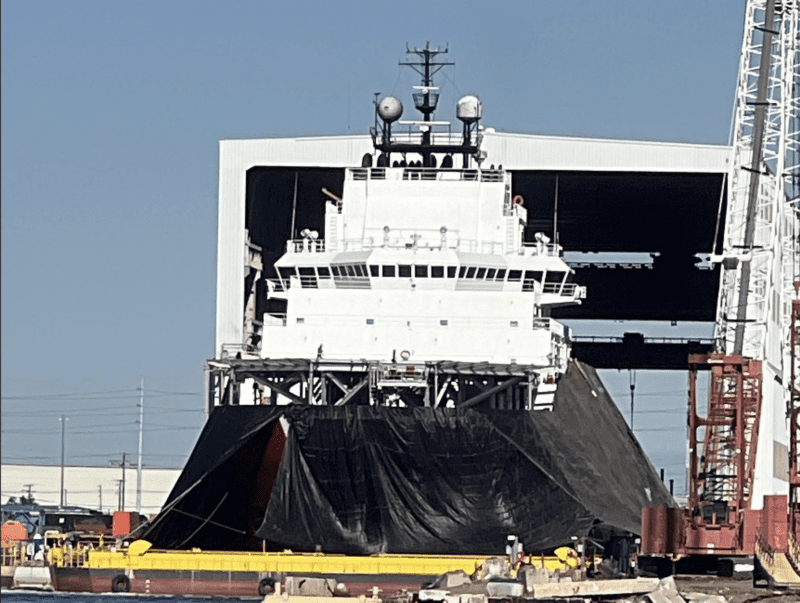If I were to design an AOPS anti shipping package I would look at something like a deck launched RBS 15 Mk IV. Anything that extends the range as far as possible. So you can hit them well away from their own salvo range or detection range.
I would guess Naval Strike Missile or Harpoon would be fitted given the future/current adoption of those systems vs an entirely new procurement of a foreign missile system. NSM is very light as well which makes it fairly easy to fit aboard in an ad hoc manner, albeit with a fair bit less range than something like RBS-15 Mark IV.
What about shore batteries (Guns and/or Missiles) to help bolster our Artic defence ?
You could even do some remote, no ?
Given the general ranges involved, guns are likely not a realistic option. Mobile coastal missile batteries are possible although the logistics of those systems are going to be somewhat questionable. You'll need to get these systems to the North somehow, meaning they will either need to be airlifted or sealifted. They cannot rapidly deploy like aviation can during a crisis, so you'd need to accept that delay or forward base them somewhere there isn't currently infrastructure for them. There is serious issues with forward basing such systems in these remote areas and continually maintaining them in a state of readiness.
These batteries aren't just concentrated on one vehicle as well, looking at Poland's NSM battery and it has:
- 1x command vehicle
- 3x launch vehicles
- 1x communications vehicle
- 1x radar vehicle
This battery is all wheeled truck mounted and provides you a 12 missile salvo, I'd imagine you'd have issues with traditional trucks in the Arctic alongside needing serious winterization to be able to operate vehicles for any amount of time there. NSM is a relatively small missile as well, the larger you get and the more issues are caused due to larger vehicles. You still need security and support forces as well in addition to the force listed above.
Russian batteries for the Bastion P system are larger and are composed of the following:
- 4x launch vehicles
- 1x or 2x command vehicles
- 1x radar vehicle
- 4x missile reload vehicles
This is more of a comparable mobile battery to what Canada would need, these can operate in Arctic territories like Kotelny Island where Bastion P had been previously located. These vehicles are all far larger than their Polish counterparts and would pose a lot of issues to move around the Arctic effectively.
Well I was just using CQ-9B as an example of an external asset that can provide targeting information.
I was about to post that CQ-9B's don't carry that kind of ranged anti-ship missiles (as late as of 2023) but then I remembered RIMPAC this last year.

www.navyleaders.com
Brand new capability that was tested.
I don't think its on the systems to be integrated into the CQ-9 Guardian though. Not sure if that would be a software or hardward (or both) upgrade.
I'm a big LRASM fan, wish there was a surface rail launched version instead of vertical launch.
Guardian has 9 total hardpoints and can carry up to 2,155kg of ordnance however, that is also considering any pods or other items it has to carry for its missions regardless. Brimstone missiles and Paveway IV LGB's are already integrated into the system but such a limited payload weight hurts what weaponry can be employed. Joint Strike Missile (air launched NSM development) is 416kg, LRASM is 1,250kg, AIM-174B is 860kg, etc. There is also pylon weight limitations and flight stability to take into concerns, alongside the fact Guardian is a huge lumbering target for anybody to blast out of the sky, it is a poor strike platform.
Meanwhile the USCG is doing what it can to get some more ice breaking capability. Personally we should offer to build them a naval AOP's, with no design changes, other than the ordering of longer lead items, I suspect it could be built without impacting the River Class schedule.
The U.S. Coast Guard has closed on the $125m fixed-price deal to acquire and convert icebreaking supply ship Aiviq from Offshore Surface Vessels LLC, part of Edison Chouest Offshore (ECO).

gcaptain.com
Given how absolutely vital the River class vessels are and the fact we are scheduled to begin full rate production next year, I only view trying to squeeze another AOPS out of Irving as something troublesome. Irving needs to transition their supply chains, infrastructure and work force towards the River class program, the Americans are big boys and can go elsewhere to not ruin our shipbuilding program. They would also need to get legal exemptions as far as I know to order a vessel to be build by Canadian yards.
www.navyleaders.com






